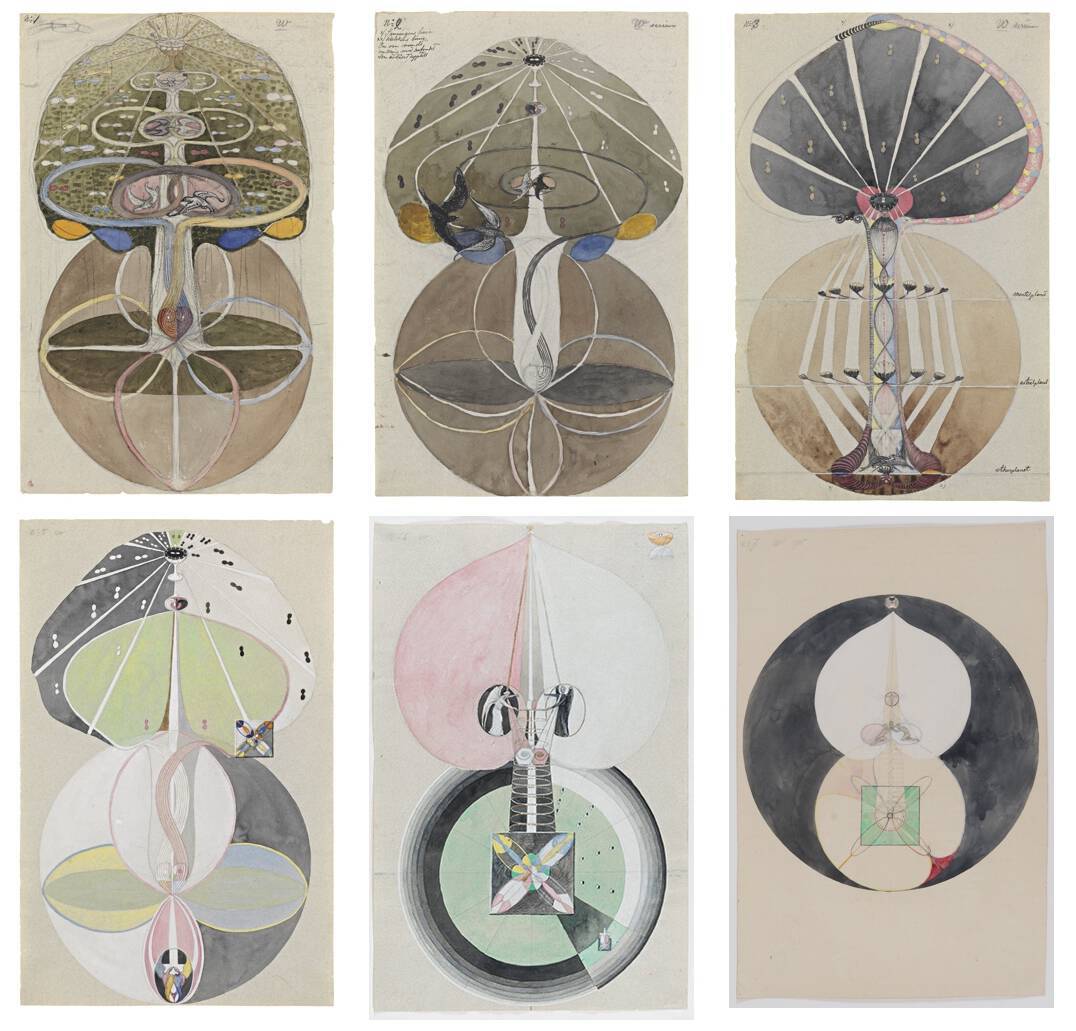Klint Interrogates the Intersection of Science and Spirituality

The exhibit “Hilma af Klint: Paintings for the Future” runs at the Guggenheim Museum in New York City until April 23. This exhibition showcases the works of one of the first artists to usher in the movement of abstract painting, Hilma af Klint.
The installation begins with a series of work called the 10 Largest, which are intended to be viewed together as a collection showing the stages of life from childhood to old age. The inspiration for this series came from Klint’s practice of transcendentalist spirituality, a practice of communicating with the world of the spirit that was popular during Klint’s lifetime. Klint received a commission from the spirits telling her to create a body of works to be hung in a temple celebrating spirituality. The temple never came into being, but Klint painted over 100 works, including this series. Klint uses bright colors, particularly purples and yellows, and features abstract patterns and symbols. At over three meters tall, these works are a striking and engaging way to begin the exhibit. While they show some continuity, each work is unique and interesting.
Klint’s colorful, imaginative works depart from the traditional academic painting of the early 20th century. Klint, who was born in Sweden in 1862, began painting in this style in 1906, before those credited as pioneers of abstract art, such as Vasily Kandinsky, had adopted the style. Klint knew her abstract style was radically different from anything seen before and decided that the world was not ready to understand it. She requested that none of her paintings be shown until 20 years after her death. Her family followed her wishes, and her work wasn’t seen until 1986, over 40 years after her death in 1944. Today, the Guggenheim Museum has put together a show to explore Klint’s revolutionary style and give the public a chance to see her work.
Clear in the exhibition is the intersection between science and spirituality that influenced Klint’s works. During a short window in the early 20th century, the scientific community pioneered groundbreaking discoveries around atomic models, X-rays, the laws of physics and the size of the universe. Science proved that there was another dimension beyond the ones that can be physically seen or touched.
Simultaneously, there was a surge of spiritualism across Europe and the United States. Klint practiced spiritualism and theosophy, an individualized spirituality that seeks an understanding of divinity. Klint, along with a community of other women, held seances which they believed allowed them to access spirits of another dimension. It was in channeling these spirits and listening to their instructions that Klint created much of her work. The spirits often spoke to Klint through repeating symbols and letters that she recorded and featured in her paintings.
This combination reveals itself well in Klint’s series on the tree of knowledge. The iconography of the tree comes from the story of Adam and Eve, which relates to her spiritual beliefs. On the other hand, her composition and presentation of the tree evokes scientific diagramming. Reminiscent of both biblical and scientific schools, Klint finds an intersection between the two to create her own representation of the tree of knowledge.
Similarly, in her series on evolution, a theory that was still considered revolutionary during her time, Klint uses abstract symbols, many of which are from her ritual seances with the spirits to explore the concept of evolution. Klint repeats the image of the snail shell as a representation of evolutionary theory, as well as geometric patterns. Her choice of bright colors and contrasting black is striking and draws the attention of the viewer right away.
As a whole, the exhibit felt complete but not overwhelming. It was mainly composed of series revolving around one concept, so viewers could fully engage in her thoughts, philosophies and depictions on how the world of science meets and merges with one of spiritualism.





Comments ()